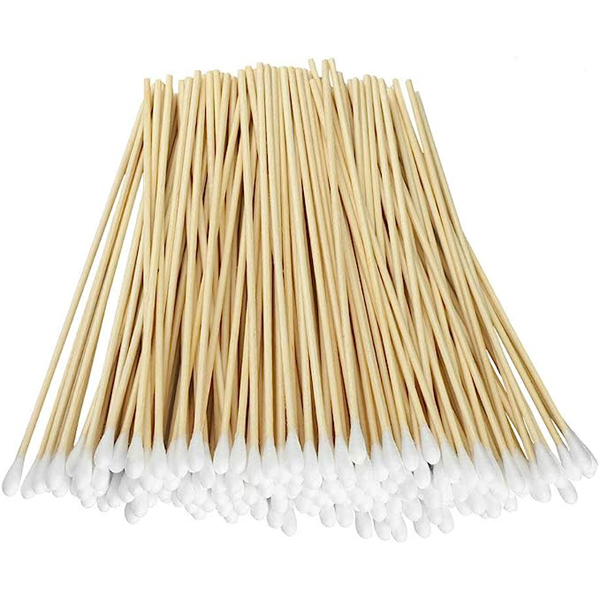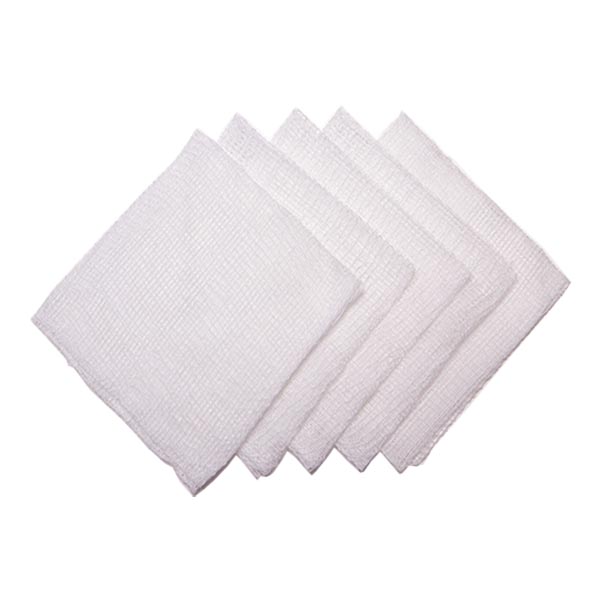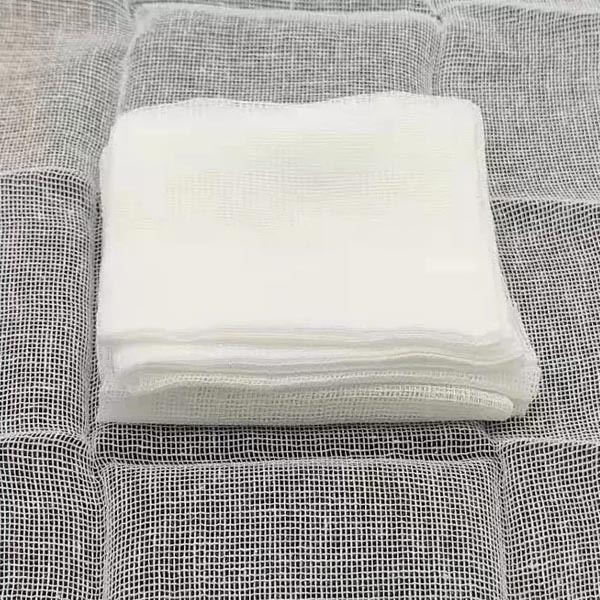Are you a medical professional, a procurement officer, or someone responsible for stocking medical supplies? Knowing when medical cotton and gauze expire is crucial for patient safety and cost-effective inventory management. This article delves into the expiration date of these essential items, explaining how to buy high-quality products, store them properly, and avoid potential risks. We’ll explore the factors that influence shelf life, provide practical tips for inventory control, and answer common questions to help you maintain a safe and efficient medical environment. It’s worth reading to understand the critical aspects of your medical supplies.
1. Why Does the Expiration Date of Medical Supplies Matter?
The expiration date of medical supplies, including cotton and gauze, is not just a formality; it’s a critical factor for patient safety and the effectiveness of medical care. Using expired products can lead to serious consequences, so it’s really important to pay attention to this. Think about it: a wound dressing that’s no longer sterile could introduce infection. Similarly, absorbent cotton that has degraded might not adequately treat a wound.
Expired medical supplies can lose their efficacy over time. The materials can break down, or any sterile barrier might not be maintained. This is why it’s so important that you keep an eye on the expiration date of all the items you store.
2. What is the Typical Shelf Life of Medical Cotton and Gauze?
The shelf life of medical cotton and gauze can vary, but generally, most products have an expiration date of 3-5 years from the date of manufacture. This is what you should assume unless the package has a different expiration date printed on it. The expiration date is there to guarantee product quality.
The shelf life depends on the manufacturing process and how it’s stored. You should always check the label on each product to find the correct expiration date.
For example, you can visit our site to check about high quality product: Medical cotton swab 7.5CM disposable.
3. How Does Storage Affect the Shelf Life of Medical Cotton and Gauze?
Proper storage is crucial to maintain the shelf life and quality of your medical supplies. The goal is to keep the product in optimal conditions so it doesn’t expire prematurely or degrade in any way. Always store cotton and gauze in a cool, dry place.
- Temperature: Avoid extreme temperatures, both hot and cold. Ideally, store at a moderate temperature (around 20-25°C or 68-77°F).
- Moisture: Prevent exposure to moisture. Moisture can damage the materials and reduce their effectiveness.
- Light: Store away from direct sunlight. Direct sunlight can sometimes degrade the material.
- Environment: Maintain a clean environment free from dust and contaminants.
- Other Factors: Make sure to avoid exposure to chemicals.

4. What are the Signs That Medical Cotton or Gauze Has Expired?
It’s important to know how to sign and spot expired medical supplies before they can be used. This is why you need to change your practices if you see these signs:
- Expiration Date: The most obvious sign is the printed expiration date. If the date has passed, the product should not be used.
- Package Integrity: Check the package for tears, holes, or any sign of damage. If the package is compromised, the sterility of the product is no longer guaranteed.
- Color Change: Any change in the color of the cotton or gauze can indicate that the material has degraded. Cotton should appear white. Gauze can have a slightly beige color.
- Odor: Any unusual or unpleasant odor can also be a sign that the product has degraded.
- Fiber Integrity: If the cotton is shedding more than usual or the gauze fibers are breaking down, it may be expired.
5. Can You Use Medical Cotton or Gauze After the Expiration Date?
Generally, using medical cotton or gauze after its expiration date is not recommended. While some products might retain some level of functionality, the risk of reduced effectiveness or contamination is too great to take.
Here’s why it is best to avoid using expired products:
- Sterility Concerns: The sterility of a sterile gauze package cannot be guaranteed after the expiration date. This puts the patient at risk of infection.
- Material Degradation: Over time, cotton and gauze can degrade. They can lose their absorbency or break down more easily.
- Reduced Effectiveness: An expired product may not be as effective at providing the necessary level of care. This could be a real issue in wound care.
6. How to Buy High-Quality Medical Cotton and Gauze: Factors to Consider
When you buy medical cotton and gauze, you want to make sure you’re getting high-quality products.
- Material: Choose cotton and gauze made from high-quality materials. The material should be soft, absorbent, and free from any contaminants.
- Sterility: Make sure that sterile products are properly packaged and guaranteed to be sterile. Check for sterility certificates if you purchase in bulk.
- Compliance: The products should meet relevant medical standards and certifications (e.g., ISO 13485, CE marking, etc.). If you’re in the US, look for FDA compliance when required.
- Packaging: The packaging should be durable and protect the product from damage and contamination. Check the package for proper sealing and labeling.
- Supplier Reputation: Buy from a reputable manufacturer or supplier. Check their reviews, and make sure they have a guarantee of quality. Yeah, we’re that good.
- Price: Compare price points from different suppliers. Note that the price of quality medical products is often higher, but it is a worthwhile investment.
- Absorbency: Choose absorbent cotton or gauze pads. This is crucial for effective wound care.

7. How to Properly Store Medical Cotton and Gauze to Extend Shelf Life
Effective storage is essential to extend the shelf life of medical cotton and gauze. Here are some tips for best practices:
- Cool, Dry Storage: Store in a cool, dry place away from direct sunlight.
- Temperature Control: Keep the storage temperature between 20-25°C (68-77°F).
- Moisture Control: Avoid areas with high moisture levels. Moisture can damage the product and reduce its shelf life.
- Air Circulation: Ensure good air circulation around the stored products. This helps to prevent the buildup of moisture and prevent the growth of pathogens.
- Protection from Contaminants: Keep the storage area clean and free from dust, dirt, and other contaminants. Make sure to clean the store area.
- Organization: Organize your inventory to allow easy access and rotation of stock.
8. Inventory Management: Strategies for Tracking and Rotating Medical Supplies
Effective inventory management is key to avoiding waste, ensuring you always have enough supplies on hand, and making sure that you don’t expire.
- First-In, First-Out (FIFO): Always use the FIFO method. This means that the oldest stock is used first. This ensures that you use the items before they expire.
- Regular Inventory Audits: Conduct regular audits to check expiration dates.
- Proper Labeling: Clearly label all medical supplies with the expiration date and batch numbers.
- Rotation: Rotate your stock regularly to prevent items from sitting on the shelves for longer than necessary.
- Automated Systems: If possible, use inventory management systems to track supplies and set up alerts.
- Stock Levels: Monitor usage rates to maintain appropriate stock levels.
- Reorder Points: Set reorder points to ensure that you always have adequate supplies on hand.

9. What Are the Costs Associated with Expired Medical Supplies?
The costs associated with expired medical supplies are often more than what you might think.
- Financial Loss: The most obvious cost is the loss of the product itself. Once a product has expired, it cannot be used, and you will have to throw it away.
- Wasted Resources: Discarding expired supplies wastes resources.
- Storage Costs: You are also paying to store those items that can’t be used.
- Potential Patient Risk: If you use an expired item on a patient, it could lead to infections. This can lead to liability and legal consequences.
- Reduced Efficiency: Having to deal with the management of expired supplies takes time.
10. Where to Buy Medical Cotton and Gauze and Ensure You Get the Best Price
Finding the right supplier is just as important as understanding expiration dates.
- Reputable Suppliers: Look for established suppliers with a good reputation in the industry.
- B2B Marketplaces: Platforms like Alibaba and Global Sources can connect you with manufacturers.
- Medical Trade Shows: Go to medical device and healthcare exhibitions.
- Compare Prices: Get quotes from multiple suppliers and compare the price and their quality.
- Check Certifications: Make sure the supplier meets the necessary regulatory requirements.
- Negotiate: Don’t be afraid to negotiate price and terms.
- Samples: Request samples to evaluate the quality of the products.
- Consider the Cost of Shipping: Factor shipping costs into the overall price and purchase.
Medicalzx is a manufacturer with 7 production lines. You can buy directly from us, and we can guarantee the high-quality of the products. You can check all products here: Professional Medical Device Manufacturer – ZhongXing. Also we have Medical Gauze Bandage Roll 4cm*500cm for Wounding and other products like Medical bed sheet that you can buy.
Key Takeaways
- Always check the expiration date before using medical cotton and gauze.
- Store medical supplies in a cool, dry place away from direct sunlight.
- Implement FIFO inventory management.
- Buy from reputable suppliers and evaluate product quality.
- Using expired products can break sterile conditions and compromise patient safety.
- Regular audits are your best bet.
- Don’t assume anything.
Post time: 2月-17-2025





